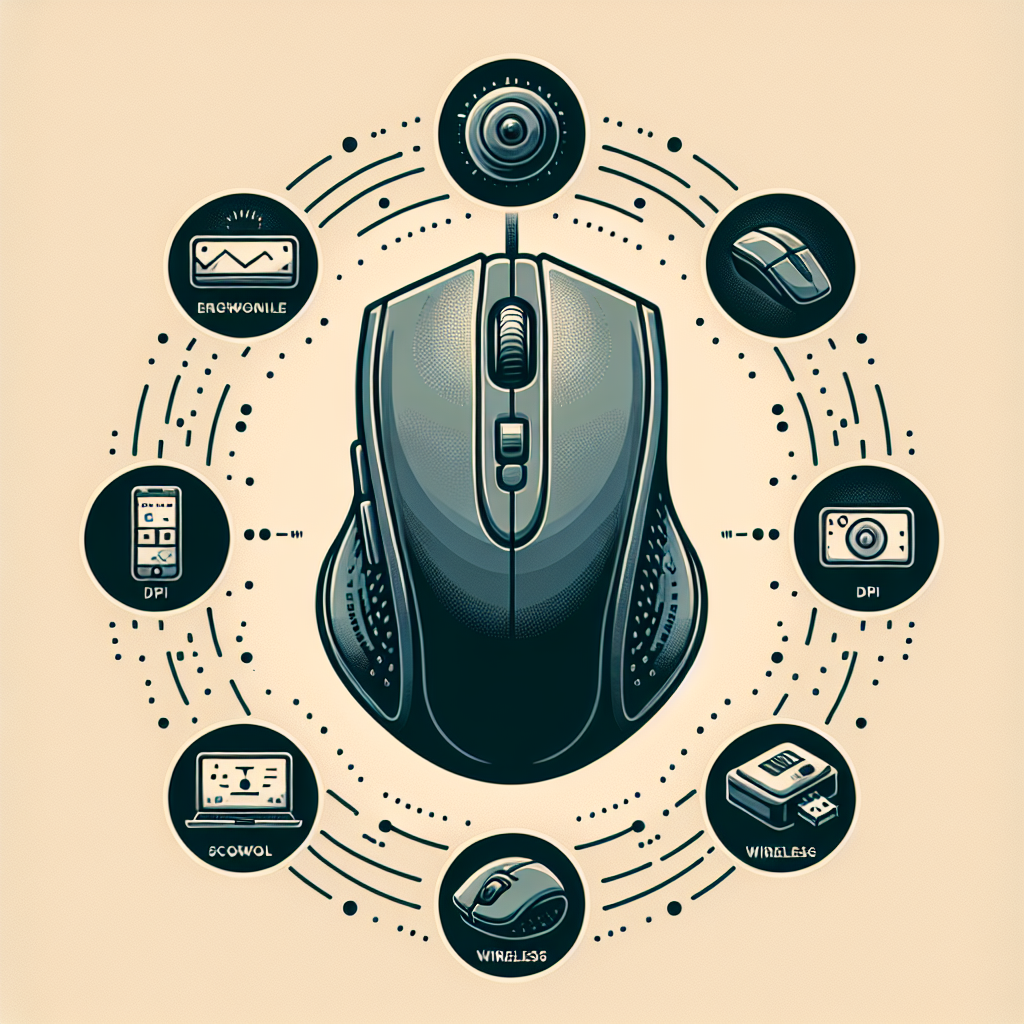In today's digital age, the computer mouse has become an essential tool for navigating digital environments. A good computer mouse can enhance the user experience by providing precision, comfort, and efficiency. However, with so many options available, it can be challenging to determine which features are truly important. This article will discuss the key features that make a computer mouse stand out.
Precision and DPI
One of the most critical aspects of a computer mouse is its precision. Precision is often measured in DPI (dots per inch), which indicates how sensitive the mouse is to movement. A higher DPI means more sensitivity and greater precision. This is especially important for tasks requiring fine control, such as graphic design or gaming.
| DPI Range | Usage |
|---|---|
| 800 – 1600 | Standard computing tasks |
| 1600 – 3200 | Gaming and media editing |
| 3200+ | High-precision tasks like design |
Ergonomics
Comfort during prolonged use is another essential feature. A well-designed, ergonomic mouse can prevent strain and enhance comfort. Look for mice that fit the natural curvature of your hand and provide adequate support for your wrist and fingers.
Customizable Buttons
Many modern mice come with customizable buttons that can be programmed for various functions such as opening applications, executing commands, or performing shortcuts. This feature can dramatically improve productivity, especially for power users and gamers.
Wireless or Wired
The choice between a wireless or wired mouse often comes down to personal preference and specific use cases. Wireless mice offer the convenience of no cables but require batteries or charging. Wired mice provide consistent performance and typically do not require charging.
Connectivity
Modern mice offer various connectivity options such as USB, Bluetooth, and RF (radio frequency). Each has its advantages:
- USB: Reliable and fast connection but requires a port.
- Bluetooth: No need for a dongle, works well with laptops and tablets.
- RF: Uses a USB dongle, provides a stable connection.
Sensor Type
The type of sensor a mouse uses can also impact its performance. Optical sensors are suitable for most surfaces but might struggle on shiny or reflective surfaces. Laser sensors, on the other hand, provide better precision on various surfaces, including glass.
Build Quality
Durability and build quality should not be overlooked. A well-built mouse can withstand years of use. Look for mice made with high-quality materials, and if possible, choose one with robust buttons that can handle millions of clicks.
Weight
The weight of a mouse can greatly affect its usability. Some users prefer lightweight mice for quick, flick movements, often sought by gamers. Others might favor a heavier mouse for improved precision and control.
Additional Features
Many high-end mice come with additional features such as RGB lighting, adjustable weights, and high polling rates. While these may not be essential, they can enhance the overall experience for the user.
Price
Lastly, consider the price. While there are numerous high-end, feature-rich mice available, there are also plenty of affordable options that offer excellent value for money. Determine your budget and prioritize the features that matter most to you.
Conclusion
In summary, the key features of a good computer mouse include precision, ergonomics, customizable buttons, wireless or wired options, various connectivity methods, sensor type, build quality, weight, additional features, and price. By assessing these factors, you can find a mouse that perfectly matches your needs and enhances your overall computing experience.

